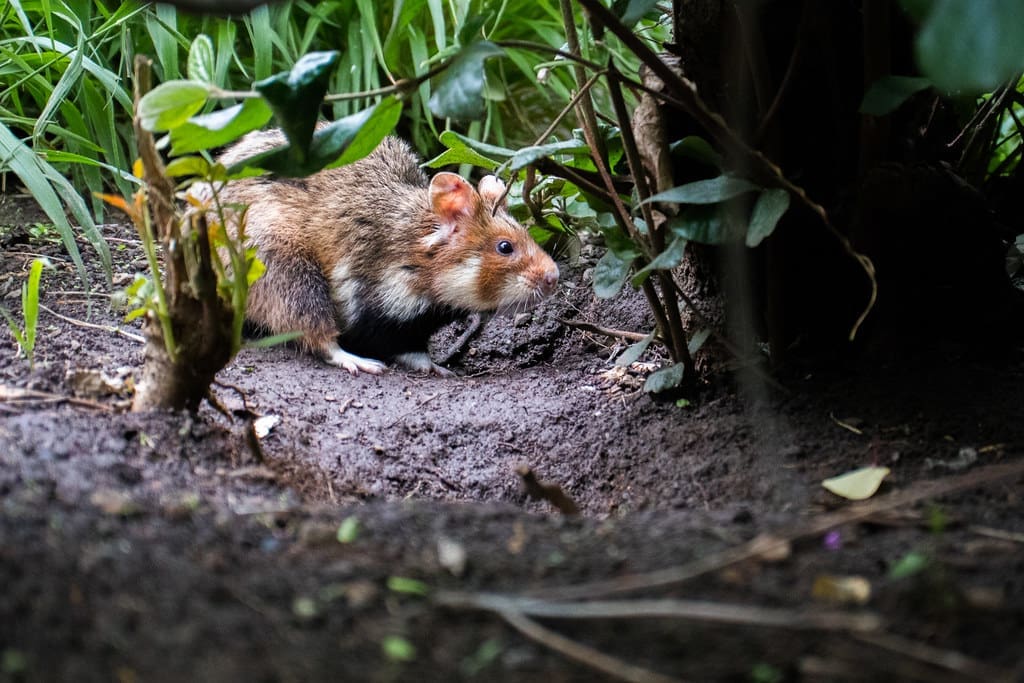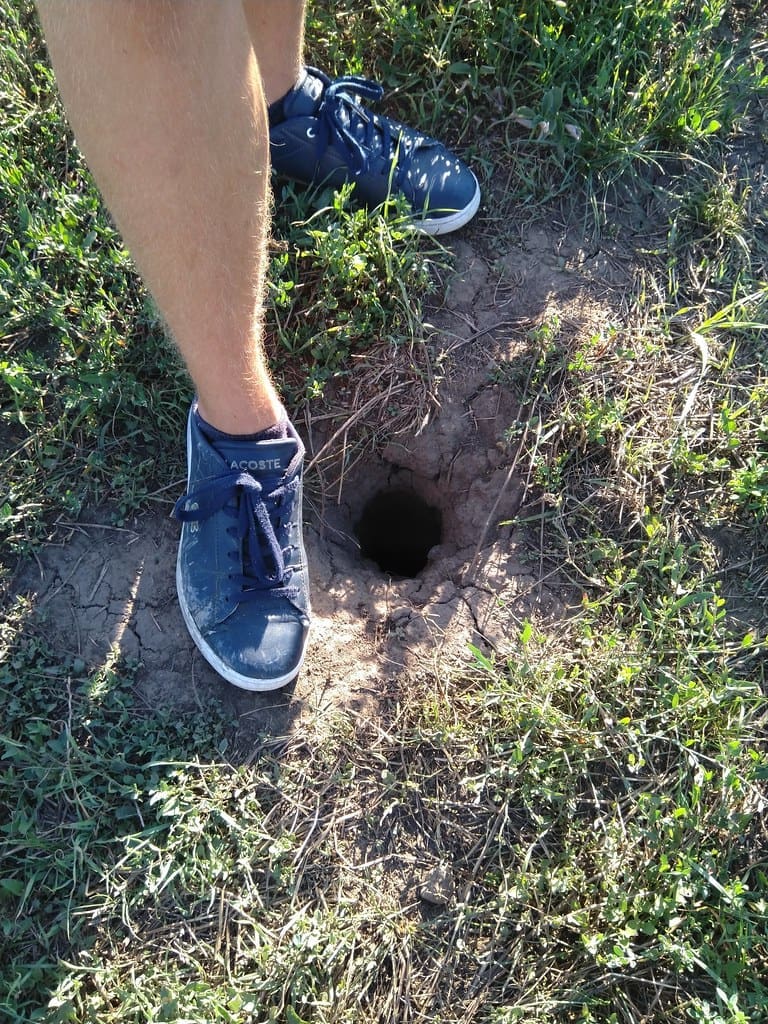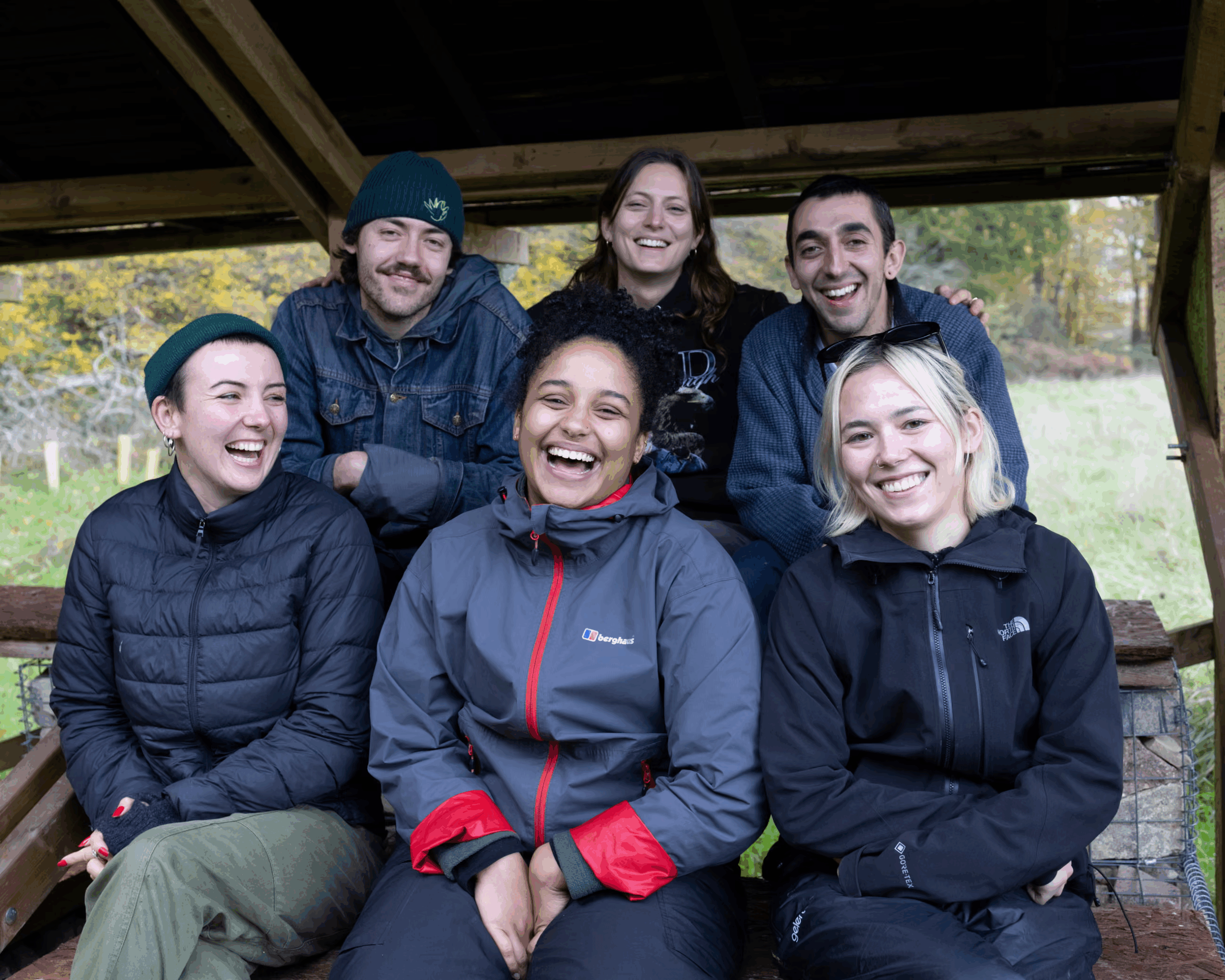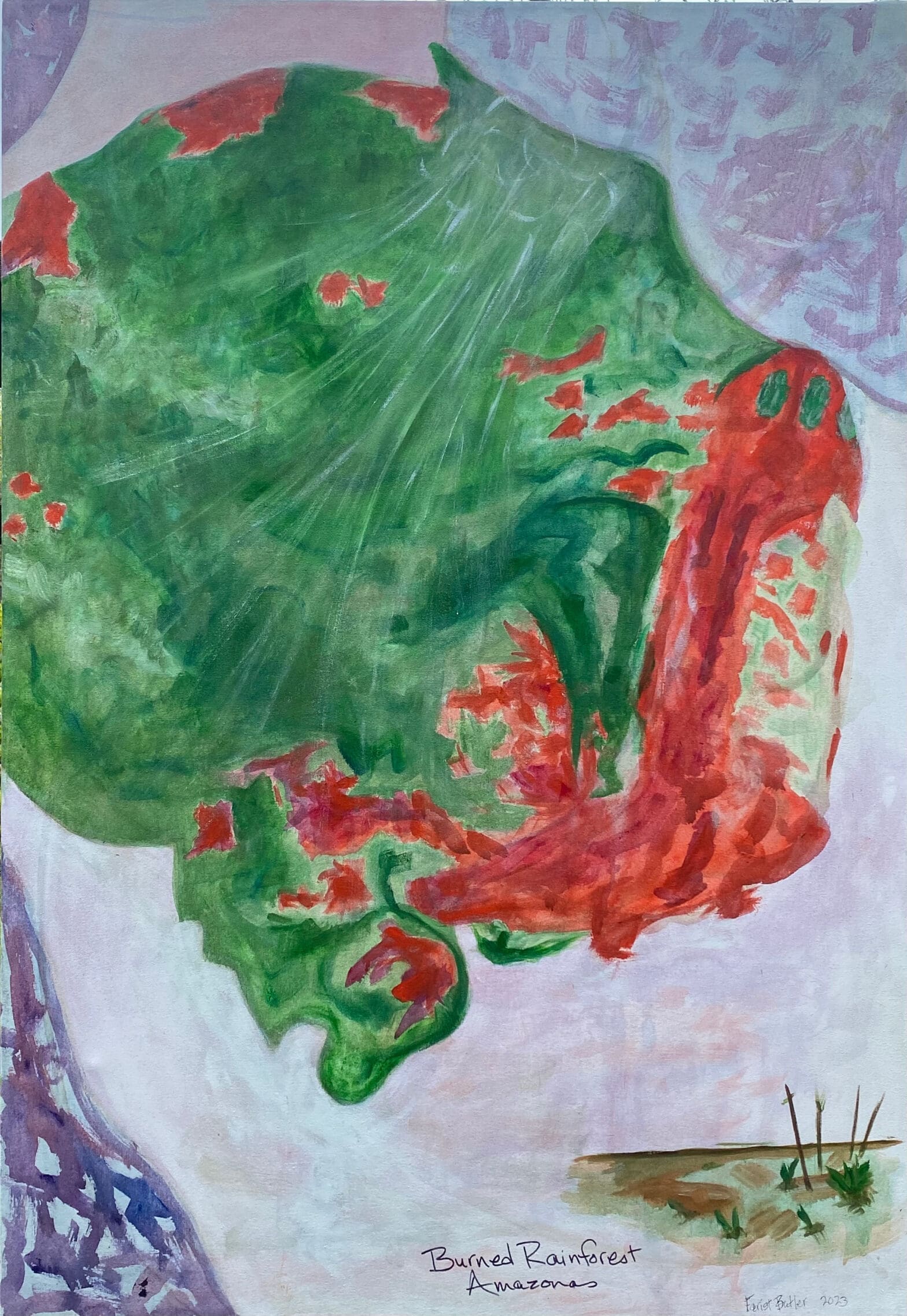Which keystone species creates intricate burrows, is aggressive towards its own kind, and hibernates from October to May?
The European Hamster!

(Photo by Ivan Radic licensed under CC BY 2.0)
Did you know that there are multiple species of hamster in the wild? I didn’t know this until recently, when I stumbled upon a BBC Earth video of a European Hamster foraging for food in a graveyard. Having only ever been exposed to domesticated hamsters, I was fascinated by this creature and eager to learn more about it.
Burrow into the Basics
The scientific name for the European Hamster is Cricetus cricetus. These furry creatures have a small, ovalish body covered in reddish-brown fur, with the exception of white fur on their face and the side of their body. Quite small in size, European Hamsters typically weigh about 12 – 15 ounces and are about 8-9 inches in length (just a bit bigger than the average human hand!).
In terms of geography, this solitary species is native to Central and Eastern Europe, hence its name. They inhabit steppe and grassland regions that are lush with greenery on relatively flat land.
A Life Well-Lived
The European Hamster has a unique mating process. During the mating season between March and May, females engage in a ritual in which they run in a figure-8 pattern to attract their mate. Males, in turn, will chase the females during this ritual while making a special mating call.
After successful mating with several males, a female’s pregnancy will last about 18 – 21 days and results in about 3 – 7 hamster pups. Females are the primary caregivers to their pups, as males are relatively hands-off in the upbringing of their young. They typically nurse the pups for about a month, or 30 days. The European Hamster has an impressive lifespan among small rodents – it can live up to 8 whole years!
Settling in for Winter
Hibernation is an important part of the European Hamster’s key to a long life. They typically rest from mid-October to mid-March in a deep (2 meter) underground burrow. During hibernation, they wake up about every week or so to get a quick snack before falling back into rest.
Their burrows play a vital role in the European Hamster’s daily life. These burrows exist deep in the ground and have a variety of chambers for specific uses, like food storage.

(Photo by Bas Kers (NL) is licensed under CC BY-NC-SA 2.0)
With a healthy appetite, the European hamster loves to eat grasses, seeds, grains, roots, fruits, legumes, and occasionally some insects or insect larvae. They might often be seen spending the day packing their roomy cheeks full of food to bring back to their food storage chamber to prepare for hibernation.
A Temperamental Creature
European Hamsters aren’t the most friendly of creatures, possibly least of all towards their own kind. They mark their territory with secretions, and when they come into contact with another member of their species, they may act aggressively. They have also been known to attack humans when approached by farmers, who may view the species as harmful to their agricultural operations.
European Hamsters deserve particular recognition for their role as a keystone species. They play a crucial role in dispersing seeds throughout the European grassland and steppe ecosystems that they inhabit. They also contribute to the food web by primarily consuming producers (i.e., plants & plant products), and by serving as prey to a host of predators including birds, foxes, weasels, dogs, cats, badgers, and more.
One Keystone Species Affects the Entire Ecosystem
Unfortunately, this important keystone species is currently critically endangered due to a number of factors. According to Animal Diversity Web, “European hamsters have been hunted or sold for their pelts. They also have been used for cancer research, due to their exposure to pesticides and air pollution in urban settings.”
Luckily, there are rehabilitation and reintroduction efforts underway to protect this valuable keystone species and the ecosystem it helps to support. You can learn more about one such project in Khotyn National Park, Ukraine by clicking here:
For all keystone species,
Abby

Abby Abrahamson is a writer, activist, and educator with a passion for community-led biodiversity and climate solutions. As a graduate of sociology and environmental studies, she appreciates the intersectionality of our challenges of climate justice, conservation, and regeneration. Now a Teacher Naturalist with Mass Audubon, Abby formerly worked with Bio4Climate on communications, college outreach, and community engagement. She has also been involved in Jane Goodall’s Roots and Shoots, an organization that helps empower young people to work on environmental, conservation, and humanitarian issues.
Sources:
https://www.animalia.bio/european-hamster
https://en.wikipedia.org/wiki/European_hamster
https://animaldiversity.org/accounts/Cricetus_cricetus
https://www.nationalgeographic.com/animals/article/common-hamster-named-critically-endangered-europe





